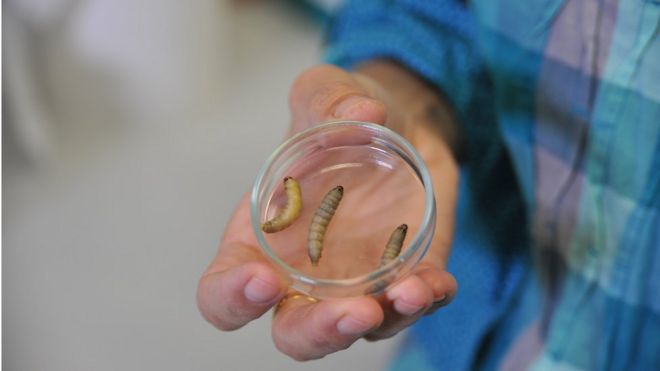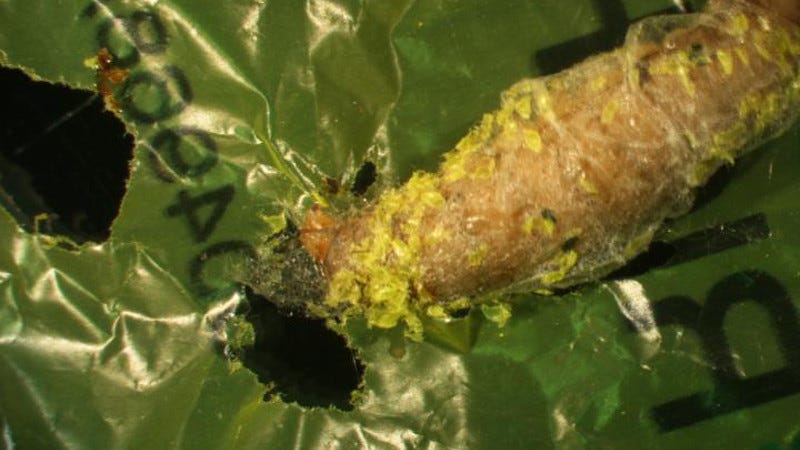
plastic eating caterpillars

Like so many other scientific discoveries, this one was assisted by a bit of luck. Study co-author Federica Bertocchini of the Spanish National Research Council happens to be an amateur beekeeper. While removing the parasitic pests from the honeycombs in her beehives, she noticed that the plastic bags she used to store the caterpillars became riddled with holes in less than an hour. Like the good scientist that she is, she decided to investigate further, recruiting biochemist Paolo Bombelli from the University of Cambridge to help out.
In experiments, the researchers exposed 100 caterpillars to a plastic polyethylene bag obtained at a UK supermarket. After just 40 minutes, holes began to appear in the bag, and after 12 hours the larvae had managed to reduce the amount of plastic by as much as 92 milligrams. That’s incredibly fast—even faster than the plastic-munching bacteria reported last year, which were capable of biodegrading plastic at a rate of 0.13 mg per day.
“If a single enzyme is responsible for this chemical process, its reproduction on a large scale using biotechnological methods should be achievable,” said Bombelli in a statement. “This discovery could be an important tool for helping to get rid of the polyethylene plastic waste accumulated in landfill sites and oceans.”
Indeed, plastic waste is a growing problem. Around 80 million tons of polyethylene is produced each year around the world, and it takes an inordinate amount of time—upwards of a hundred years—for this substance to degrade completely. Researchers are now looking to nature to find ways of boosting the speed at which we can degrade this stuff. In addition to bacteria, scientists have also discovered plastic-eating fungi.
“The caterpillar produces something that breaks the chemical bond, perhaps in its salivary glands or a symbiotic bacteria in its gut,” said Bombelli. “The next steps for us will be to try and identify the molecular processes in this reaction and see if we can isolate the enzyme responsible.”

No comments:
Post a Comment